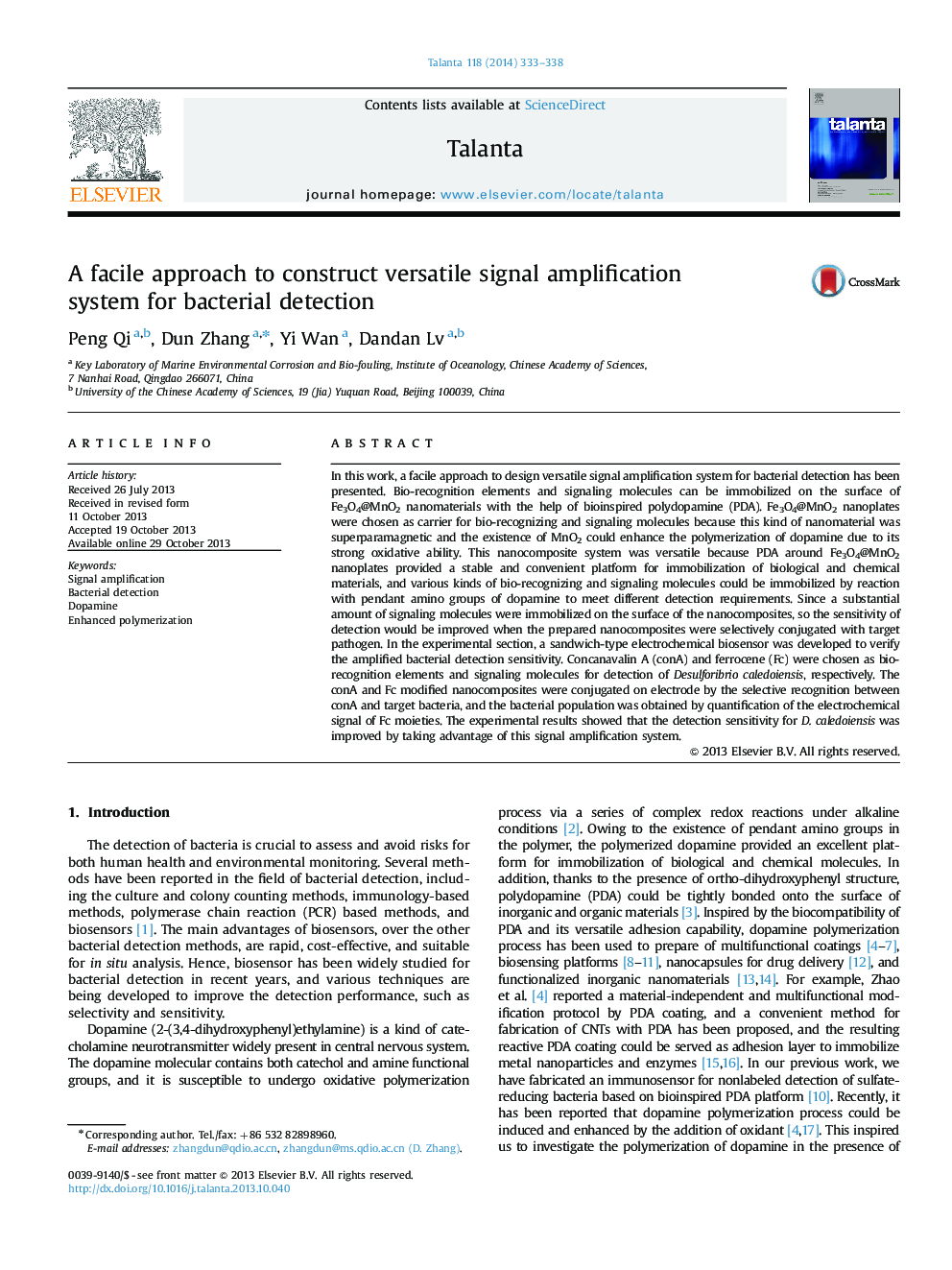| Article ID | Journal | Published Year | Pages | File Type |
|---|---|---|---|---|
| 1242124 | Talanta | 2014 | 6 Pages |
•This work provided a new and facile approach to construct stable signal amplification system based on dopamine polymerization.•Dopamine polymerization process was enhanced in the presence of Fe3O4@MnO2 nanoplates owing to the strong oxidative nature of MnO2.•Various kinds of bio-recognizing and signaling molecules could be immobilized for different detection requirements.
In this work, a facile approach to design versatile signal amplification system for bacterial detection has been presented. Bio-recognition elements and signaling molecules can be immobilized on the surface of Fe3O4@MnO2 nanomaterials with the help of bioinspired polydopamine (PDA). Fe3O4@MnO2 nanoplates were chosen as carrier for bio-recognizing and signaling molecules because this kind of nanomaterial was superparamagnetic and the existence of MnO2 could enhance the polymerization of dopamine due to its strong oxidative ability. This nanocomposite system was versatile because PDA around Fe3O4@MnO2 nanoplates provided a stable and convenient platform for immobilization of biological and chemical materials, and various kinds of bio-recognizing and signaling molecules could be immobilized by reaction with pendant amino groups of dopamine to meet different detection requirements. Since a substantial amount of signaling molecules were immobilized on the surface of the nanocomposites, so the sensitivity of detection would be improved when the prepared nanocomposites were selectively conjugated with target pathogen. In the experimental section, a sandwich-type electrochemical biosensor was developed to verify the amplified bacterial detection sensitivity. Concanavalin A (conA) and ferrocene (Fc) were chosen as bio-recognition elements and signaling molecules for detection of Desulforibrio caledoiensis, respectively. The conA and Fc modified nanocomposites were conjugated on electrode by the selective recognition between conA and target bacteria, and the bacterial population was obtained by quantification of the electrochemical signal of Fc moieties. The experimental results showed that the detection sensitivity for D. caledoiensis was improved by taking advantage of this signal amplification system.
